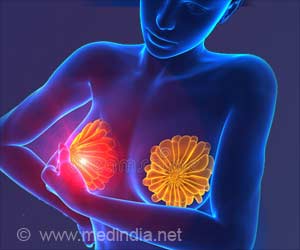recent decline in breast cancer mortality rates have been most noteworthy among women with estrogen receptor (ER)-positive tumors
A new study reports that recent decline in breast cancer mortality rates have been most noteworthy among women with estrogen receptor (ER)-positive tumors and women younger than 70.
The results of the study are being published online April 2 in the Journal of Clinical Oncology (JCO).Approximately 75% of breast cancers are ER-positive. The average age of breast cancer diagnosis is 62.
Between 1990 and 2003, breast cancer mortality rates declined by 24%. This is the first study to examine which patients have experienced the greatest declines in mortality. In 1989, the mortality rate for breast cancer peaked at 33 out of 100,000 women per year. By 2003, the mortality rate had dropped to 25 out of 100,000 women per year.
Although breast cancer mortality has declined for all groups of patients, declines were greatest for women under 70 and women whose tumors were ER-positive. The researchers found that among women under 70, mortality from breast cancer declined 38% for those with ER-positive tumors vs. 19% for those with ER-negative tumors. Among women 70 or older, mortality declined 14% for those with ER-positive tumors vs. no decline for those with ER-negative tumors.
'These trends in breast cancer mortality since 1990 are likely attributable to at least two important factors: the use of tamoxifen after surgery, which substantially reduces the risk of recurrence in ER-positive tumors only; and widespread use of screening mammography, which is more likely to detect the slow-growing tumors that tend to be ER-positive,' said Ismail Jatoi, MD, PhD, Director of the Breast Cancer Center in the Department of Surgery at the National Naval Medical Center, and the study's lead author.
This study did not explore the reasons why breast cancer mortality rates declined less for older women. However, previous studies have suggested that older women are less likely to receive adjuvant therapy for breast cancer. Because older women are under-represented in clinical trials, their optimal treatment has not been well established.
Advertisement
Investigators at the National Cancer Institute (NCI) and the National Naval Medical Center looked at 234,828 cases of invasive female breast cancer diagnosed between 1990 and 2003. The study analyzed data from the Surveillance Epidemiology and End Results (SEER) cancer registry, an NCI-sponsored, population-based database that compiles detailed cancer statistics.
Advertisement
PRI










